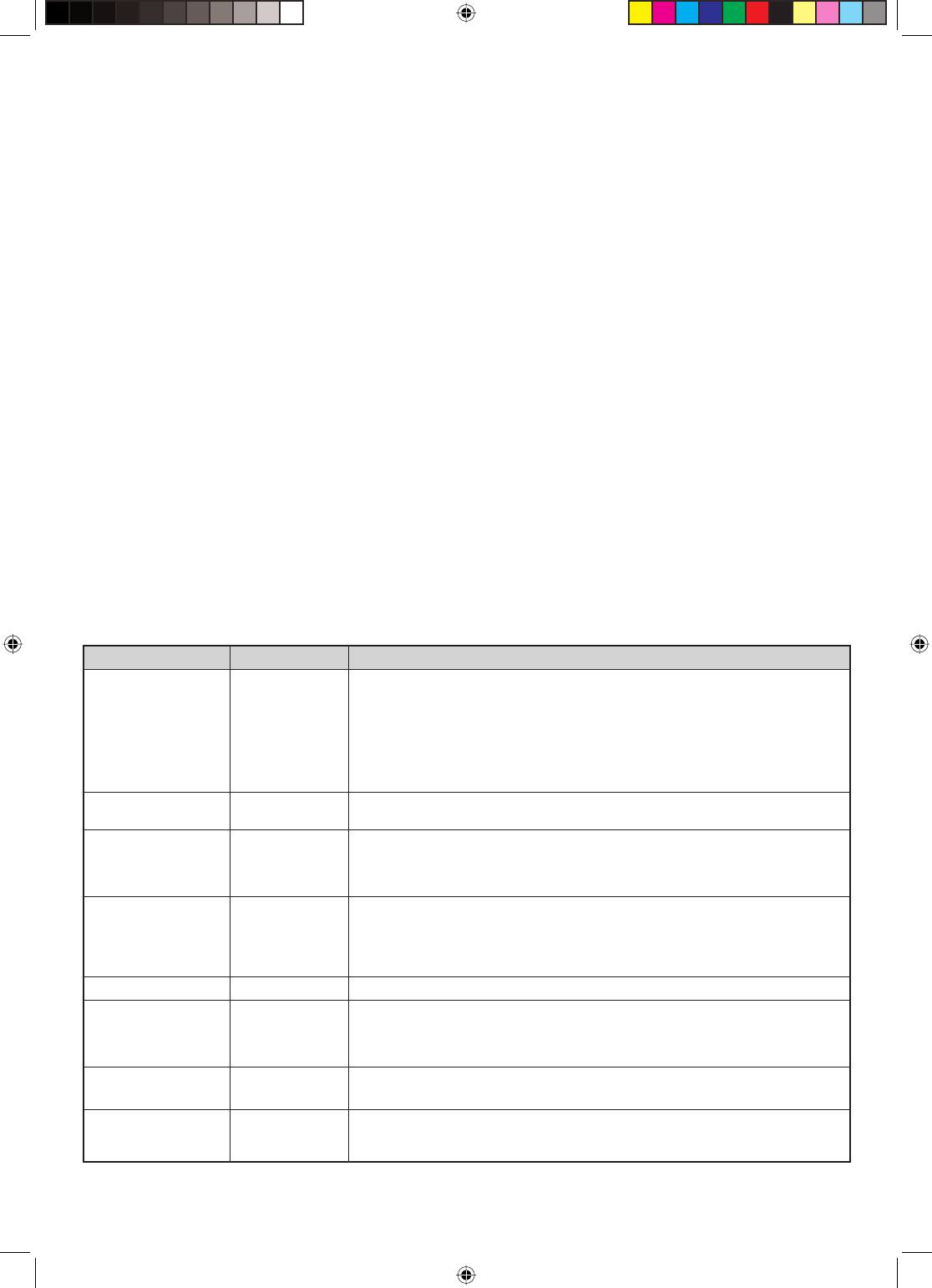
23
HELPFUL HINTS
1. THE ARRANGEMENT
Arrange foods carefully. Place thickest areas toward outside of
dish.
2. TURNING
Foods such as poultry and joints of meat should be turned over
after half the cooking time.
3. COVERING
Cover foods in the microwave if you would normally cover the
food in your ordinary oven, or to retain moisture. Cover foods
such as vegetables, casseroles, or when Reheating.
4. PIERCING
Pierce potatoes, eggs, tomatoes or any foods with a skin or
membrane to allow steam to escape.
5. SHIELDING
Shield using small pieces of aluminium foil to shield thin
areas of meat, fi sh and poultry or edges of cakes to prevent
overcooking.
6. STANDING TIME
Standing time is important. After cooking or defrosting ensure
adequate standing time. This allows the food to continue cooking
or heating.
7. STIRRING
Stir foods from the outside to the centre of the dish, once or
twice during cooking if possible. Eg. casseroles and sauces.
8. SIZE
Small pieces cook faster than large ones. To speed cooking, cut
pieces smaller than 5 cm so microwaves can penetrate to the
centre from all sides. For even cooking, make all the pieces the
same size.
9. DENSITY
The depth to which microwaves penetrate food varies depending
on the food’s density. Porous foods like minced beef or mashed
potatoes microwave faster than dense ones like steak or whole
potatoes
10. FAT AND BONE
Marbling within meat, or a thin, even layer of fat on a roast,
speeds cooking. Large fatty areas or excess drippings in dish
attract energy away from meat, and slows cooking. Centre bones
do not affect cooking, but bone on the side of meat conducts heat
to the areas next to it.
11. STARTING TEMPERATURE
Frozen or refrigerated foods take longer to heat than food at room
temperature. Cooking times in this book are based on normal
storage temperatures. Since rooms, refrigerators and freezers
differ in temperature, check cooking result at the minimum
time.
12. QUANTITY
Microwave cooking times are directly related to the amount of
food in the oven. Because energy is absorbed by the food itself,
one potato or a single piece of chicken cooks rapidly. When the
energy is divided among several items, cooking takes more
time.
13. CONDENSATION
Condensation is a normal part of microwave cooking. The
humidity and moisture in food will infl uence the amount of
condensation in the oven. Generally, covered foods will not
cause as much condensation as uncovered foods. Ensure that
the ventilation openings are not blocked.
COOKWARE AND UTENSIL GUIDE
Utensil Use Advice
GLASSWARE/
CERAMIC
(HEAT RESISTANT)
YES GLASSWARE
• Ordinary glass is not suitable for cooking but may be used for short periods for heating
foods.
CERAMIC
• Most ovenproof china, and ceramics, are suited.
• Avoid dishes that are decorated with gold or silver leaf.
• Avoid using antique pottery.
• If unsure, check with the manufacturer.
METAL COOKWARE NO • Metal cookware should be avoided when cooking in the microwave oven.
• Microwave energy is refl ected by metal.
PLASTIC WRAP
OVEN BAGS
YES • Plastic wrap can be used to cover food.
• Some shrinkage of the wrap may occur, over an extended cooking time.
• When removing wrap, lift it in such a way to avoid steam burns.
• Do not tie oven bags with metal twist ties, substitute with string.
ALUMINIUM FOIL FOR
SHIELDING
• Small amounts may be used to shield certain parts of meat and fi sh when cooking or
defrosting.
• Remove food in foil trays, if possible, and place in a microwave safe dish.
• If not possible, place the foil tray onto a heat proof plate allowing 2.5 cm room between
the walls of the oven.
STRAW AND WOOD NO • Excessive over heating of these materials may cause a fi re in the microwave oven.
PAPER YES • Paper towels and waxed paper are suitable to use to prevent splatters.
• Ideal for low heat cooking, such as reheating or very short cooking times and for foods
with low fat, sugar or water content.
Pay special attention as over-heating may cause a fi re in your oven.
PLASTIC COOKWARE
MICROWAVE SAFE
YES • Ideal for cooking, reheating and defrosting.
THERMOMETERS
•MICROWAVE SAFE
•CONVENTIONAL
YES
NO
R-1900J [EN].indd Sec1:23R-1900J [EN].indd Sec1:23 4/28/09 10:01:30 AM4/28/09 10:01:30 AM


















